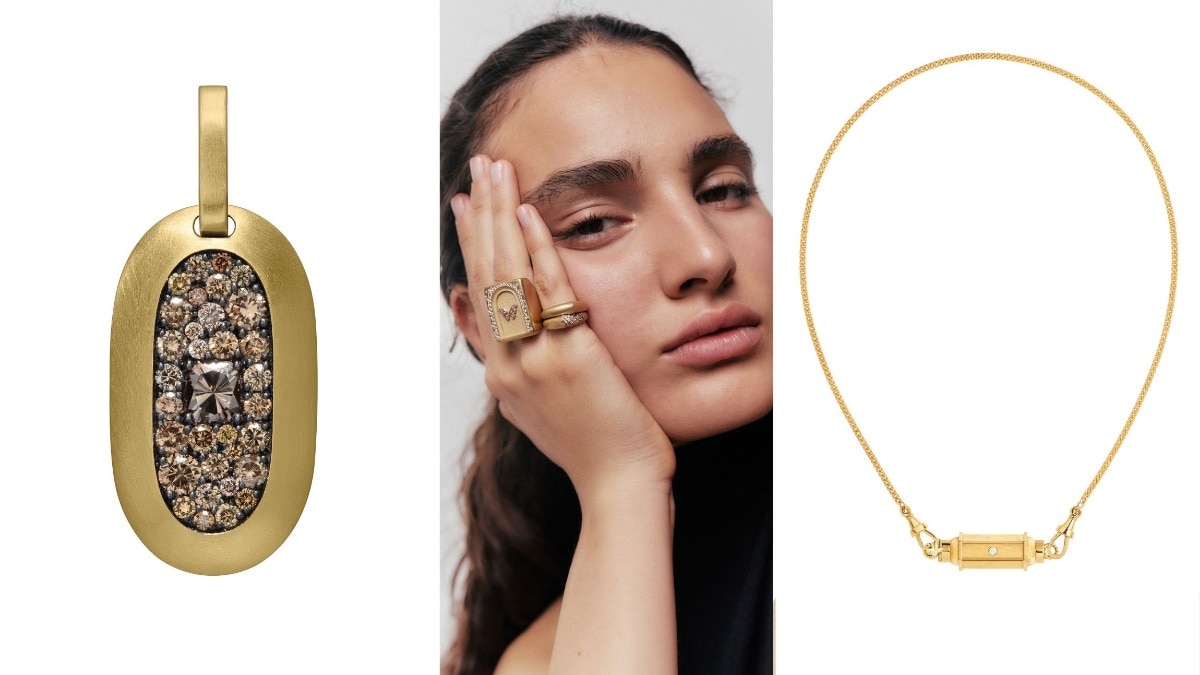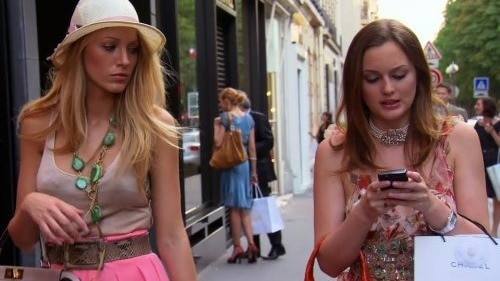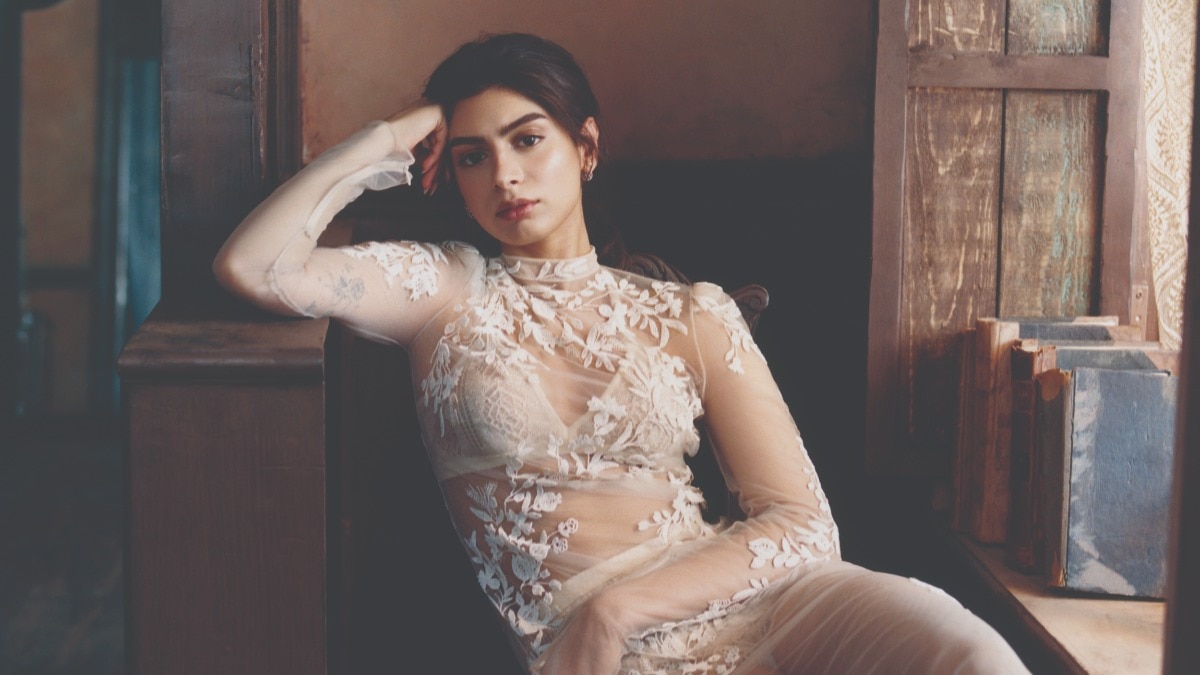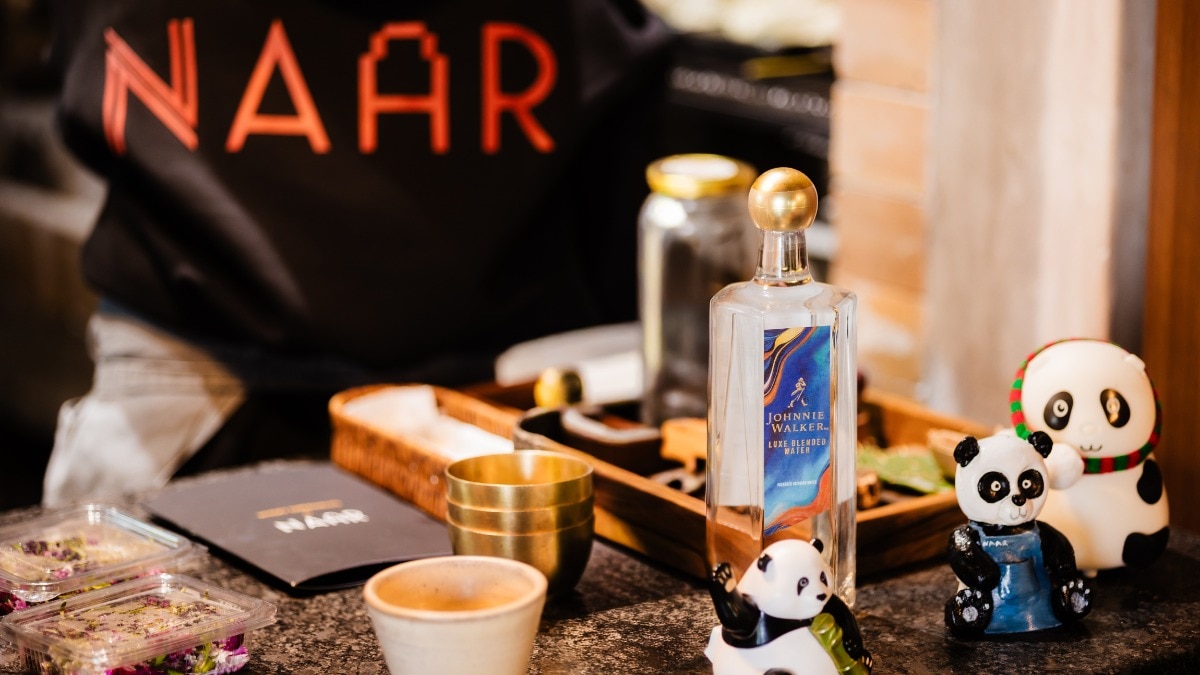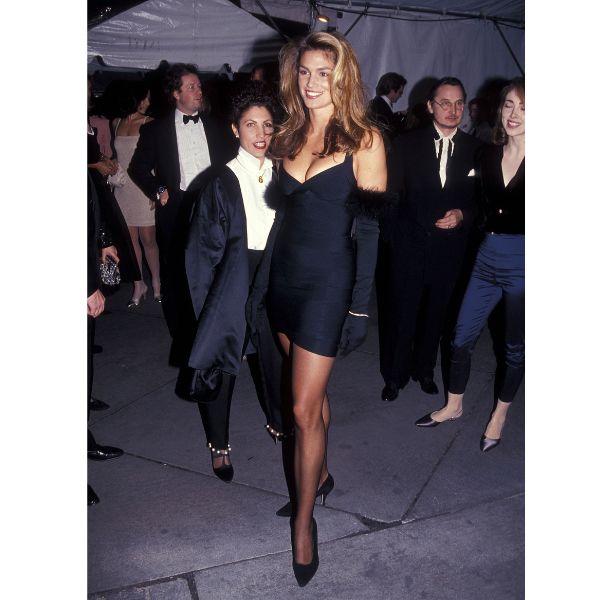
The bandage dress is back—But for whom?
Is it a recession indicator, a symptom of Gen Z naivety, or a feminist power symbol? You decide.


For her 30th birthday last year, L.A.-based writer Beatrice Hazlehurst bought herself a cream Hervé Léger bandage dress from Poshmark. She was 14 in 2009—a bit young to don the “club” dress in its heyday—so now was her chance. She suctioned herself into her thrifted bandage and headed to her party.
So pleased with her purchase, Hazlehurst soon bought another style from eBay in red. Paired with silver hoops, vintage white Dior peep-toe heels, and a tiny shoulder bag—instead of platform stilettos and a clutch—her bandage is worn to the club, sure, but also to dinner, out with friends, “everywhere. The parody of it all,” she jokes in a TikTok she posted about the dress, “I know I look like a 2010s club rat from Geordie Shore.”
Hazlehurst had absorbed an obsession with the early aughts through osmosis and says her bandage purchase was subconsciously inevitable, likening her love of tight, feminine clothing to ’90s sitcom The Nanny’s Fran Drescher’s personal style. Last year, she quickly clocked Kaia Gerber in an ankle-length style from Hervé Leger, re-creating a look her mother, Cindy Crawford, wore in 1993. This spring, Hailey Bieber tried the trend with a modern aubergine version from Saint Laurent, then later resurfaced a vintage Hervé Léger striped number from the Spring 1993 collection. After a slow incline, the bandage dress is experiencing a sudden spike in popularity. TikToks and media outlets declare it’s back—but for whom?
The controversial style earned its title because it literally looks like a bandage wrapped around its wearer. Compression is its MO; the hourglass form is evident even when on a hanger. The bandage originated at the house of Alaïa in the early ’80s and was later popularised by Hervé Peugnet, who launched his version in 1992 under his own brand, Hervé Léger. The bodycon dress was a staple among supermodels in the ’90s, then adhered itself to early 2010s club culture on the bodies of the Kardashians, Rihanna, Rachel Bilson, and more. London-based fashion brand House of CB launched its own rendition of a bandage in 2010 and has since relaunched it for its 15-year anniversary.

The resurgence gets its fuel from TikTok, where #bandagedress has 17.3 thousand global posts and saw an over 130 per cent increase in posts in the last three months. While #houseofcb has 37.3 thousand global posts, with an almost 40 per cent increase in posts in the same time frame, #herveleger witnessed a 130 per cent increase, although it had a much smaller starting point. Posts feature young 20-somethings trying bandage dresses for the first time, scouring Poshmark for OG styles—or digging them out of their mom’s closet—and comparing them to lower-priced dupes available on the primary market. Other content features millennials commenting critically on the trend, sharing their own 2009 bandage-clad club memories.
“Everyone has a story about this dress,” says current Hervé Leger SVP Melissa Lefere-Cobb. The brand was founded in 1985 and relaunched in 2018 after a change in ownership, appointing new creative director Michelle Ochs in 2023. Though the team is working to refresh the Hervé Léger identity, it has admittedly benefited from this wave of nostalgia. It’s seen an 80 per cent increase in bandage-dress sales year over year (a 50 per cent increase overall), and its TikTok following has surged about 300 per cent, with videos about the bandage dress hitting nearly a million views for the first time ever.
Though Hervé Léger hopes to cater to event dressing for bar mitzvahs and 40th birthday parties alike, Lefere-Cobb credits the Gen Z girl for the current spike. Throughout the bandage dress’s history, it has certainly been favoured by young, slender women, thanks to its bodycon silhouette. The technology of the fabric compresses and lifts your figure—“a bra for your body,” creative director Ochs calls it—but it can also be unforgiving. The TikTok surge is dominated by tiny 20-somethings, though there are certainly exceptions of those both critiquing and celebrating its fit on larger figures. (Higher-quality styles like those by Hervé Léger often produce better results.) One creator posted a video of herself in a pale pink bandage, saying, “POV you finally found the confidence to wear a bandage dress, 10 years too late.”
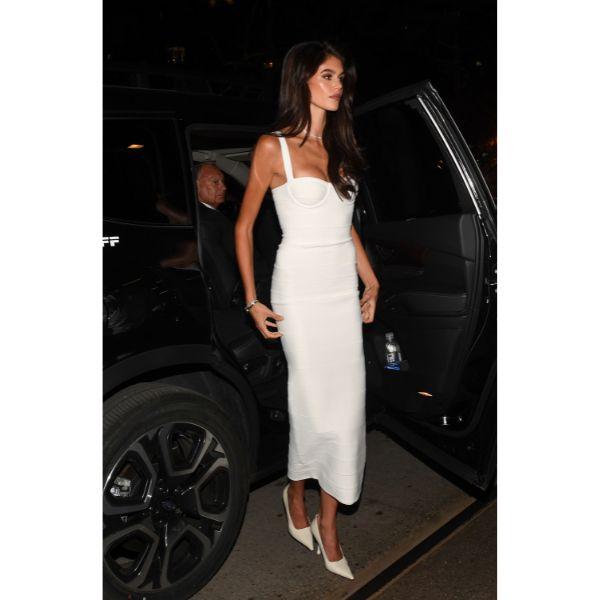
Its early-aughts skinny-centric image is something Hervé Léger has been actively trying to curtail. In 2019, the brand extended the size range from large to extra large, “which doesn’t sound groundbreaking,” admits Lefere-Cobb, “but we can now fit up to size 16.” The brand has also been centring a more diverse range of sizes in campaigns and among celebrities it dresses.
We’d be remiss not to point out the timely parallel with Ozempic-fueled thinness culture. But Hazlehurst points to a revelation of a new body ideal entirely. “My instinct is that because GLP-1s have made thinness so much more accessible, we are adapting once again to a different barely attainable body standard: the strong Pilates body,” she theorises, pointing to the athletically slim supermodels who preceded the ultrathin heroin-chic era, like Cindy Crawford and Naomi Campbell. Bandage dresses do celebrate curves in their own, at times still narrow, way. “[Hervé Leger bandage dresses] signal status in more ways than one; they’re expensive and built for few bodies.” (Retail begins around $500.)
With the female form on such an unapologetic display, there’s an ultrafeminine connotation to these dresses that also refuses to be ignored. “I have another theory women might be moving into an era of hyper femininity as a survival tactic,” Hazlehurst posits, speaking in broad strokes. “When our income or rights aren’t assured, we default to our looks and/or domestic skills to be supported—hello, rise in trad-wife culture—and that is influencing the way we present ourselves,” she says of the style often dubbed a #recessionindicator on TikTok.
Ironically—or unironically—the dress was chosen by costume designer Jocelyn Pierce for last year’s Oscar contender Anora, which debuted in 2024 but was set in 2019. She outfitted the lead, Anora “Ani” Mikheeva, in an electric-blue Hervé Léger bandage dress that was actually the old prom dress of another member of the costume team. Ani, played by Mikey Madison, is a sex worker in New York City who catches the eye of a young, naive son of a wealthy Russian oligarch.
“The bandage dress has so many references and associations; it made perfect sense,” she says. “On a purely practical level, I think it’s a style of dress that Ani would love—and it would be available to her.” But digging a little deeper, “the bandage dress has this combination of confidence, luxury, and ultrafemininity. It’s powerful.”
In past interviews, Pierce has referenced the American dream in tandem with this dress, alluding to an element of aspirational dressing. “This belief that you can create a better life through effort and determination, regardless of where you come from,” would appeal to Ani, the daughter of American immigrants. “She was getting dressed up for an opportunity, and she was dressed for the part.” (This, of course, extends to a metaphorical desire beyond that of her day job.)
Pierce, whose choice slightly predated this recent surge in popularity, has enjoyed watching the bandage dress stir up debate on social media, especially when Anora is mentioned. In the end, she’s a supporter. “I understand the stigma this dress has when it’s in the context of the early aughts, but I associate the bandage dress with ’90s minimalist glamour,” she says. “Strong, sexy, unapologetically feminine.”
All images: Getty Images
This article originally appeared on harpersbazaar.com
Also read: A curated selection of timber home decor items that will quietly enhance your abode
Also read: Why it's time to rethink the runway's final act—celebrity showstoppers


